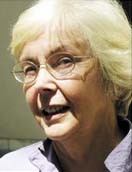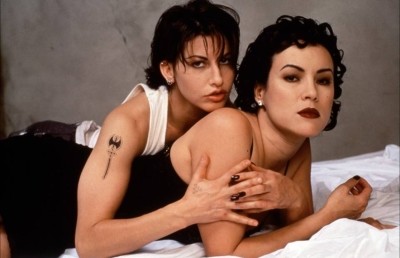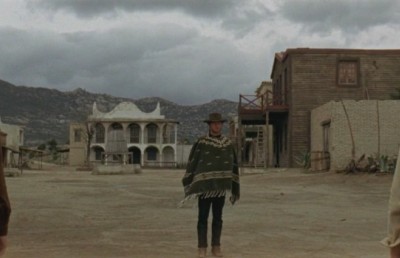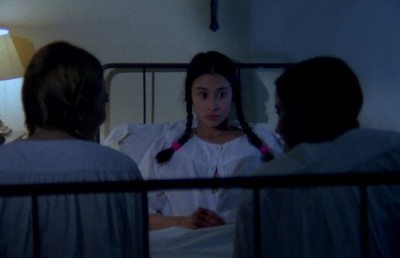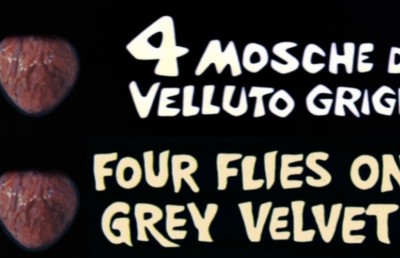Singularities: The 2010 Palm Springs International Film Festival
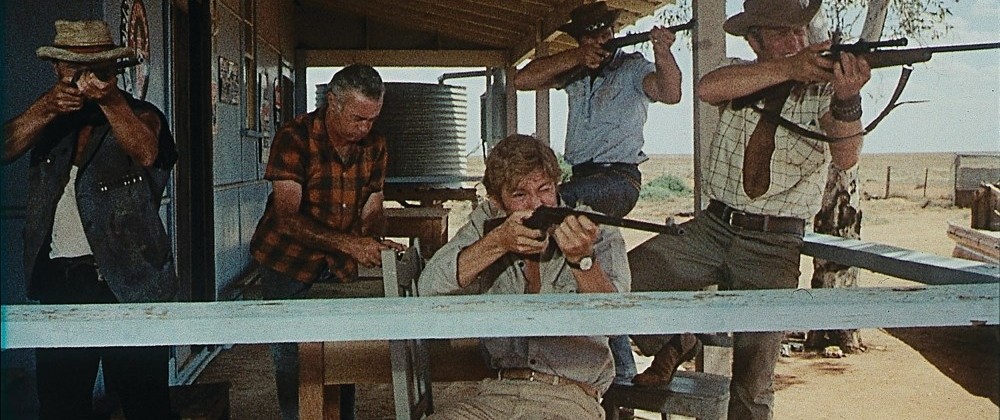
While other film festivals suffer through the sponsor pullouts and reduced ticket sales which are a byproduct of a weakened global economy, the Palm Springs International Film Festival is holding its own. Though the fest showed fewer films this year than in the past (a total of 189 as opposed to the 230 screened in 2009), the 2010 attendance topped 130,000 (barely exceeding the 129,000 tickets sold in 2009). The Festival’s success is partly due to a strategy that appeals to diverse tastes by mixing high-wattage celebrity sightings with screenings of challenging international titles (including 45 of the 60 foreign language Academy Award entries). The festival’s ability to commandeer high-profile Hollywood and foreign-language Oscar contenders owes much to the presence of a sizable number of Academy members among the locals, but this factor alone can’t account for the festival’s robust ticket sales. Virtually every screening features long lines out in front, and most sell out. Palm Springs’s large gay and gray population makes for an ideal film festival audience: affluent, educated and leisured. The festival’s energetic efforts to bring in tour groups such as Exploritas (formerly Elderhostel), Andy Friedenberg’s Film Society of San Diego, and Harlan Jacobson’s Talk Cinema further swells the crowds in front of the theaters. All have come to this appealing desert community for one reason: sun. The movies are just a bonus.
This single reason for the Palm Springs Festival’s continued success dovetailed with my experience of the films themselves, for every movie I saw contained a single element which, like the sun, illuminated the entire experience. Whether it was a striking performance (by a lone actor or an ensemble) or an arresting image (or group of similar images), these singular elements shaped my understanding of each film.
The movie that most vigorously exploited the wow factor offered by a single showy performance was the Swedish crime thriller that won the festival’s Audience Award. The Girl with the Dragon Tattoo (Män som hatar kvinnor, Niels Arden Oplev, 2009) features a titular character who easily steals the show. With her ever-present scowl, Vampira makeup and biker-ghoul wardrobe Noomi Raspace seems to have been made for the role of computer hacker Lisbeth Salander, a young woman who has dedicated her life to avenging herself against the male establishment that has done her wrong. (The literal translation of the movie’s original title is “Men Who Hate Women.”) To be sure, Lisbeth’s unpredictable eruptions into acts of stunning violence shamelessly co-opt the antics of the scary female assassin that made La Femme Nikita (Luc Besson, 1990) such a hit. Moreover, the character’s role is marginal to the movie’s whodunit plot. Notwithstanding these handicaps, Raspace grabs our attention at her first appearance and the movie drags when she’s offstage.
The Girl with the Dragon Tattoo would hold little interest without her presence. Its plot, based on a best-selling novel by Stieg Larsson, recycles some of the hoariest clichés of the genre. For characters it offers a crusading journalist, a benevolent elderly tycoon (like ??The Big Sleep??’s General Sternwood), a beautiful young girl who has gone missing, and a corrupt dynasty of capitalist patriarchs as suspects). The setting, an island with a single road connecting it to the mainland, recycles a familiar variant of the tried-and-true locked room gimmick. The plot twists turn on potboiler shockers such as graphic rape scenes, ritual murders, and buried histories of incest. Given what they had to work with, screenwriters Nikolaj Arcel and Rasmus Heisterberg deserve credit for boiling down Larsson’s 590–page tome into cogent dramatic form, first to create a three-part TV miniseries, then to forge the two hour and twenty minute feature shown in Palm Springs. In the process, they also cleaned up some of the novel’s more awkward plot devices. Director Niels Arden Oplev and cinematographers Jens Fischer and Eric Kress serve up all this hyperbolic hokum in a suitably handsome package in which sumptuous estates and magnificent scenery offer a luxe mini-tour of Sweden’s northern reaches.
It appears that producer Scott Rudin is interested in mounting an English-language remake of The Girl with the Dragon Tattoo; no doubt he sees this endeavor as a golden opportunity to introduce a new female presence into the Hollywood pantheon. Amy Winehouse, are you reading this?
The other memorable performance I witnessed in Palm Springs was of an entirely different order. Malian actor Sotigui Kouyaté’s aura of quiet dignity rescues London River??( Rachid Bouchareb, 2009) from another kind of formula in which people from diverse cultures are brought together through crisis and learn to trust one another. With his rangy physique, grizzled dreadlocks, and calm, deliberate diction, Kouyaté won a silver Bear at the Berlin festival for his role as Ousmane, a forester from Africa whose work has taken him to France. Ousmane has come to London in search of his son after the devastating bombing of the London transit system in July of 2005, Even though his character is left largely undeveloped, Kouyaté occupies center stage in the ensuing drama. Opposite him, Brenda Blethyn’s Elisabeth, a naïve Guernsey farmer who is also searching for a missing child, is given a far fuller back-story. Yet the character never wields the magnetism that Ousmane commands. Elisabeth’s incredulous responses to the continuing revelations about her daughter’s multiculturalist lifestyle repeatedly recycle the look of dull incomprehension that seemed fresh when Blethyn famously put a similar reaction on display in Mike Leigh’s widely seen ??Secrets and Lies (1996).
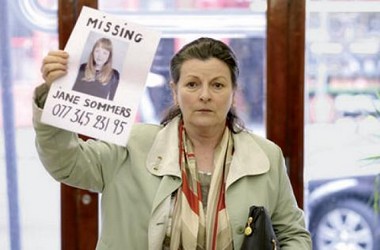
London River
A small-scale study of two parents from vastly different backgrounds who are unexpectedly thrown together through their children’s intimate bond, London River was initially conceived as a TV show but its undeniable appeal has caused it to be put out for limited release on the theatrical circuit as well. Rachid Bouchareb, the project’s French-Algerian writer/director, is no stranger to intercultural dramas having helmed the prize-winning World War II spectacle Days of Glory (Indigènes) in 2006, which focused on the injustices done to North African soldiers by the French in that epic conflict. A seasoned producer of challenging fare from edgy filmmakers like Bruno Dumont, Bouchareb understands perhaps too well the constraints imposed by the imperative of commercial viability. London River makes no missteps in that regard: it tugs at the heartstrings, delivers a timely message, and offers a leading performance that sets it apart from the many similar fictions to which it will inevitably be compared.
Not just individuals but ensembles provided some of the acting highlights on display in Palm Springs, among them several impressive portraits of all-male groups. Perhaps the darkest of these standout male ensembles was in Brotherhood (Broderskab, Nicolo Donato, 2010), a Danish production that explores the explosive consequences that ensue when homophobes turn into homosexuals. Focused on the subculture of Neo-Nazism that is currently flourishing in Scandinavia, Brotherhood features a cluster of intense performances by its mostly male cast, capped by bravura turns from the two leads Thure Lindhardt and David Dencik, whose characters’ emotions swing between ungovernable passion and tortured anxiety. Writer-director Nicolo Donato’s unflaggingly energetic engagement with this disturbing material keeps the tension high as events spin out of control.
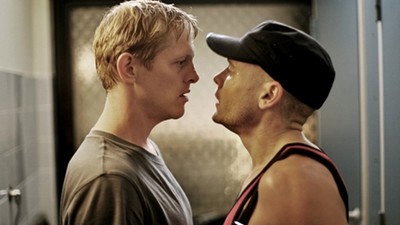
Brotherhood
Another Scandinavian film, The Swimsuit Issue (Allt flyter, Måns Herngren, 2008), offers a more lighthearted portrayal of male camaraderie. A diverting piece of fluff from Swedish director Måns Herngren (who co-wrote the screenplay with Jane Magnusson), the story shamelessly riffs on British male-centered comedies like The Full Monty. But here the subject is not male stripping but male synchronized swimming, and watching this group of actors carry out complicated aquatic maneuvers as the camera watches unblinkingly creates the kind of pleasure that has been in short supply since the days of Busby Berkeley.
Venerable British filmmaker Ken Loach supplied yet another vision of male bonding in Looking for Eric (2009), his first attempt at comedy. Though Loach’s longtime scriptwriter Paul Laverty has crafted a ramshackle story that careens wildly among divergent moods and directions, the interaction between the film’s hero Eric Bishop (Steve Evets) and his mates more than makes up for any deficiencies in the plot. Led by the chubby Meatballs (John Henshaw), this buffoonish assemblage of Manchester postal workers goes to outlandish extremes in its efforts to cheer up a pal who is experiencing emotional hard times over his wife’s desertion. The group’s bumbling attempts at consolation create scenes filled with off-kilter low comedy that recall the antics of the rude mechanicals in A Midsummer Night’s Dream. The mates are aided in their efforts by former British soccer star Eric Cantona, who appears to Bishop as a ghost and provides him with a saner form of therapy.
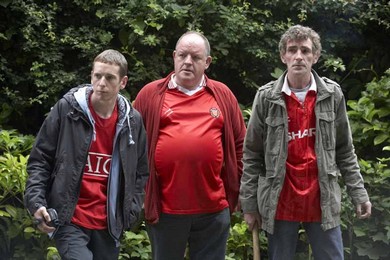
Looking for Eric
This being a Ken Loach film, the role of the group is far from incidental. When the mates act as one, they resolve the movie’s most troublesome issue, thwarting the bad guys and setting Bishop’s life on an even keel. The film’s final scene pictures all of these maladroits driving triumphantly off together down a straightaway, a vision that bookends the view of Bishop we first see as he circles a roundabout alone in his car. Being part of a group, Loach and Laverty seem to say, is what makes the difference between chasing your tail and heading off into the wild blue yonder. The dialogue underlines this motif. At one point Cantona comments that his proudest moment as a player was a pass, not a goal. And when asked what the movie’s villains are most afraid of, one of the mates suggests in all earnestness, “unions”?
Groups can represent not just subcultures but cultures as a whole. The pleasures to be found in Baariá (2009), Guiseppe Tonatore’s nostalgic Valentine to his Sicilian hometown, reside in the affection shown to its host of characters. Even when I was unable to keep all the cousins, grandparents and neighbors straight, I was drawn in to Tonatore’s grandiose saga by a gestural vocabulary shared by all of the townspeople that conveys a welcoming warmth and geniality even when it intends to signal annoyance or rejection. Shrugs, eye-rolling, finger flicks, and air kisses abound in this community. This single performance trope, set off by grandly sweeping camera movements, lavishly staged crowd scenes, and Italian maestro Ennio Morricone’s lush, romantic score, recommends Baariá despite its rambling plot about the coming of age of a radical local politician.
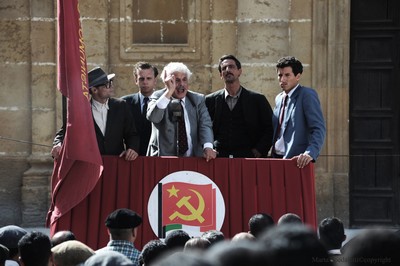
Baariá
Performances were not the only striking element in the films I found most memorable in Palm Springs; sometimes a single image or series of images was enough to create an indelible impression. A few such images trafficked in shock value; others were charged with thematic motifs. In the former category, the newly restored 1979 Wake in Fright (Ted Kotcheff, 1971), part of the Festival’s salute to Australian cinema, was most notable for its graphic depiction of a kangaroo hunt in the country’s vast outback. In his introduction to the Palm Springs screening and again during the question-and-answer session afterwards, Ted Kotcheff, the film’s director, offered elaborate rationales for this gruesome sequence, claiming that documentary footage of actual hunts were sandwiched into the narrative. Perhaps. But the evidence of the film itself told a different story through footage in which actors are seen grappling with terrified animals at length. ??Wake in Fright??’s story chronicles the misadventures of John Grant, a naïve young teacher who is sucked into a vortex of dissipation in the sweltering outback during his brief Christmas vacation. His roller-coaster ride to Hell is capped by a drunken rampage in which he becomes part of a vile foursome who set out to massacre as many kangaroos as possible.
In this scene, as in most of the film’s other episodes, the male denizens of the Australian hinterland are revealed as good-time-Charlies who spend their waking hours drinking beer and gambling. Donald Pleasance and Australian film legend Chips Rafferty play members of the citizenry of this God-forsaken part of the world lending notable support to Barry Bond, cast as the hapless teacher. Kotcheff supplies some striking visuals to set up this Aussie variation on Under the Volcano, including the 360-degree pan of the bleak, parched landscape that opens the film. Later, an overhead shot of a gambling den conveys a feeling of vertiginous lightheadedness that sets the stage for Grant’s loss of self-control.
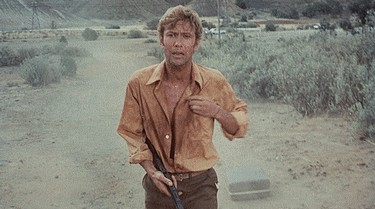
Wake in Flight
During his Palm Springs appearance Kotcheff, who hails from Canada, explained his affinity for this forbidding material by commenting that he responded to ??Wake in Fright??’s outback setting as an analogue to the Canadian tundra. But Canada never gets this hot. And there are no kangaroos.
Another set of shocking images on view in Palm Springs were the graphic shots of surgeries featured in Camino (Javier Fesser, 2008), a grim examination of the fate suffered by a young girl whose Opus Dei-enraptured parents are ill-equipped to deal with her terminal illness. As a series of gory surgeries probe Camino’s body, so does her family’s religious extremism dissect her psyche so that Camino (winningly enacted by Nerea Camacho) ultimately begins to yearn for the nobility that a beatific death will grant her. Winner of six Goya Awards in its native Spain, Javier Fesser’s thoughtful film juxtaposes the Church’s somber romance with dying against the more life-affirming emotions that have begun to stir in Camino’s breast as she becomes infatuated with one of the boys in a local theater troupe. The girl’s innocent fantasies are rendered in lively and candy-colored scenarios that offer a welcome respite from the solemnity surrounding the child’s interactions with the Catholic clergy. Such cheerful interludes, however, are not enough to lift what is basically a 143 minute death vigil, set off by cold hues and mournful music, out of its overarching aura of gloom. The film does, however, serve as a reminder to all who view it that Muslim extremism is not the only religious fundamentalism with a reverence for martyrdom.
While Wake in Fright and Camino offer indelible sets of appalling images, three other movies screened in Palm Springs each feature a solitary shot that encapsulates the theme of the work as a whole. Mario Amenta’s The Sicilian Girl (La siciliana ribelle, 2009) is, like Camino, based on historical events, but unlike the compliant girl in the Spanish film, the central figure here is a rebellious spitfire. Rita (Veronica D’Agostino) belongs to a Mafia family, and her story consists of her struggle to come to terms with this heritage. Ultimately, she manages to break with the draconian traditions of tribal loyalty that have governed Sicilian culture for generations. Her decision is difficult, because these strictures are intimately bound up with her adulation of her father, a Cosa Nostra Don. Rita’s change of heart is announced by a flashback which repeats a memory image we have seen earlier. But now a coda is added. The initial flashback finds the girl gazing furtively through a window as her father oversees the punishment of a local miscreant. In the expanded memory she subsequently recovers, however, her eyes turn aside to reveal that this beloved patrone not only observed but also participated in the thuggish punishment the Mafia meted out. In this moment of epiphany, Rita abandons her allegiance to the law of the father and gives herself over to the law of the land.
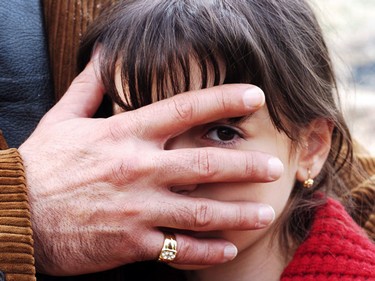
The Sicilian Girl
A very different film, small and gentle where The Sicilian Girl is visceral and sweeping, also features a single memorable image. But in Klaus Härö’s Finnish chamber piece Letters to Father Jacob (Postia pappi Jaakobille, 2009) the vision is not presented as an insight arrived at by one of the film’s characters but as a view granted only to us, the audience. The shot in question occurs early in the film. Leila, a woman condemned for murder, is offered a chance to rehabilitate herself by serving as an amanuensis for a blind, poverty-stricken priest. As she enters the priest’s rundown country home, the camera follows her while she traces a circular path through the living and dining room back toward the entrance where the aged pastor sits half-concealed. Some viewers might object that this complicated shot, which functions as a visual foreshadowing of the tortured spiritual journey Leila will subsequently undergo, is too artful by half. Not me. Nor do I share the view that would dismiss Letters to Father Jacob as Bergman for wimps. Top-flight performances from Kaarina Hazard as the stolid, hard-mouthed Leila and Heikki Nousiainen as the saintly but unexpectedly cunning priest lift this potentially saccharine tale to a high level while Dani Stromback’s delicate piano score and Tuomo Hutri’s handsome cinematography provide a background of understated elegance. Such virtues allow the film’s simple story to float effortlessly along toward its admittedly predictable conclusion.
The most haunting image I took away from Palm Springs emerged during a film that was not only the best I saw at the Festival but one of the best movies I’ve seen in some time. The shot occurs near the beginning of The White Ribbon (Das weisse Band, Michael Haneke, 2009), Austrian auteur Michael Haneke’s austere black-and-white study of a mysterious series of misdeeds that occur in Eichwald, a small town in Germany, just before World War I. Cinematographer Christian Berger’s camera lingers motionlessly on a closed door as we hear the distant sounds of a boy being beaten by his father on the other side of the door. Peter Brunette’s superb new book on Haneke also singles out this shot for special notice, though Brunette doesn’t probe its implications. To me, however, this image holds the key to the movie’s main concerns. The White Ribbon is full of closed doors, and it concludes with an attempt to break into a house which has been totally locked up to conceal an unspeakable crime. The hyper-orderly life of the community depends on the repression of what lies behind these sealed-off spaces. The lynchpin of this order is the church, the town communal heart. Scenes set in this privileged space are configured in rigid, highly centered compositions. In this tightly-wound place even the scenery betrays a carefully cultivated organization: neatly stacked piles of hay dotted at regular intervals across a field, a road bordered by an evenly-spaced avenue of trees, and a meticulously planted field of blowing wheat. In such a milieu it seems hardly accidental that a traditional peasant act of rebellion consists of eviscerating the tidy rows of a cabbage patch.
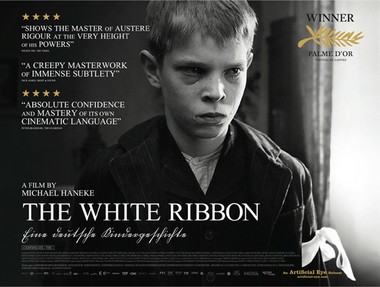
The White Ribbon
Eichwald’s citizens fit neatly into the communal scheme, having groomed their psyches to conform to their places in the society’s rigidly hierarchical order. Thus most of the characters in The White Ribbon are identified merely by their social roles. Among them are the Baron (Ulrich Tukur), the Baroness (Ursina Lardi), the Steward (Josef Bierbichler), the Tutor (Michael Kranz), the Doctor (Rainer Bock), the Midwife (Susanne Lothar), the Pastor (Brughart Klaussner), the Pastor’s Wife (Steffi Küenhurt), and the Farmer (Branko Samarovski). Only the children of the village, who have not yet been completely co-opted into the communal framework, retain the names that mark their individuality. These include Sigi, the Baron’s son (Fion Mutert); Anna and Rudolf, the Doctor’s daughter and son (Roxane Duran and Miljan Chatelain); Klara, Martin and Gustav, the Pastor’s children (Maria-Victoria Dragus, Leonard Proxhauf, and Thibault Sérié); and Karli, the illegitimate Mongoloid son of the Midwife (Eddie Grahl).
In a class apart are the Schoolteacher (Christian Friedel), who forty years later remembers the events depicted here as the film’s voice-over narrator, and his innocent young lady-love Eva (Leonie Benesch). In contrast to the claustrophobic, sanitized spaces in which most of the action occurs, the courtship of these two blossoms out in the open. Their first tête-à-tête is held in the scruffy, expansive town square. Later, they take a carriage ride past an uncultivated field bordered by a forest. The teacher himself spends much of his time in the liminal space of his schoolroom where the orderly pattern of students sitting obediently at their desks is prone to unexpected outbreaks of rowdy confusion. Psychologically, too, the teacher occupies a liminal space. Though he harbors dark suspicions about the perpetrators of the criminal acts that haunt the village, his desire to bring to light the hidden underbelly of the town’s repressive social order is easily squelched.
The film’s striking image of a closed door speaks not only about the characters in The White Ribbon??’s fictional universe but also about its audience. Some commentators have suggested that in this, his newest effort, Haneke has veered away from his usual strategy of provoking those who choose to attend his films with unsavory images meant to confront the thirst for voyeuristic thrills and unacknowledged sadism that lies at the heart of moviegoing pleasure. But Haneke has not abandoned his provocative tactics here; he has merely made them subtler—and thus, perhaps, more audience-friendly. To contemplate the attenuated image of the closed door very closely is to ask why we find it disturbing; and perhaps this is because a part of us yearns to be granted entrance to the room on the other side, to witness the beating that is going on there. Haneke has said that ??The White Ribbon examines a social ideology that could have been a factor in the subsequent rise of Nazism in Germany. But the repressive mechanisms that characterize Eichwald are not unique to a single time and place but arise from tendencies in human nature that are universal. The film’s title refers to the ribbons the Pastor gives to his errant children to remind them of the need to keep themselves pure. Perhaps The White Ribbon, which won the Palme d’Or at Cannes and a Golden Globe as the best foreign film of 2009, should be viewed as a similar “gift” from Haneke to his audience, a (black and) white ribbon to remind us that, like the citizens of Eichwald, we too harbor perverse urges which must be accounted for if civilization itself is to survive.

